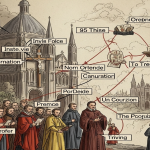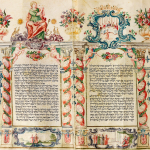WHEN I SEE YOU, A THOUSAND EYES TURNING BLUE: Cacciaguida asks:
Is “the woman-as-icon moment” the same as “the across-a-crowded-room thing”?
Ha, good catch! He’s referring to one of my problems with the “Goblet of Fire” movie. But yeah, I think it is different. Let me try to marshal theology to defend my aesthetic preferences!
The first, most obvious difference is that in the woman-as-icon moments, the seeker usually doesn’t attain the lady. The aching absence and sense of persistent lack helps to give those moments their spiritual heft.
Moreover, “he saw her across a crowded room” IMO substitutes iconicity for individuality, in situations where individuality is required. I mean, to date an actual human female, you should probably be interested in her as something other than an icon. Actually, my biggest problem with the Stephen Fry thing mentioned in the previous post is precisely that it’s “he saw him across a crowded room”–the personality of the beloved is both unknown and irrelevant, and yet that doesn’t suggest to the lover that perhaps something other than this particular human individual is what’s really being sought.
If you fall in love with an icon seen standing at her window, you might be “in love with love,” or you might be in love with something you see through the window of this woman. But you definitely aren’t in love with that particular woman, because you don’t actually know anything about her other than how she looks. So attempts to write a realist romance based on the iconic vision, rather than e.g. a psalm, are going to fail because you… get stuck in the window (to carry this metaphor well past where it should stop), instead of moving through it to a deeper desire.
Or in other words, don’t marry a girl just because the sunlight caught in her hair one afternoon and you thought suddenly of God. You’ll still have to live with her and do the washing-up, you know.











